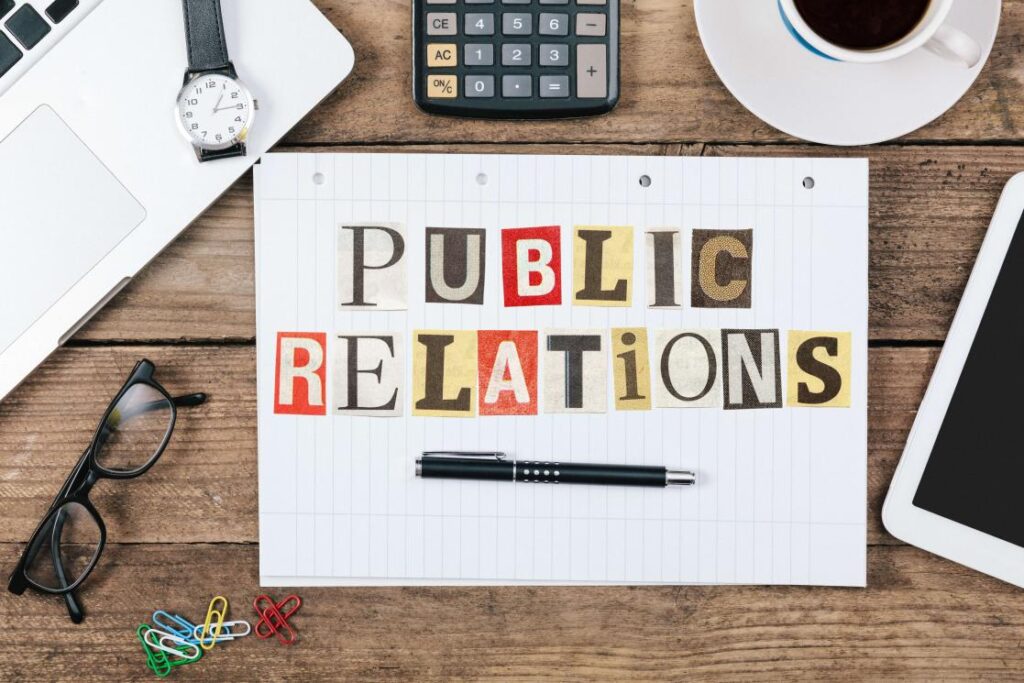Public Relations (PR) disasters are scenarios where a brand’s image and reputation are significantly tarnished due to adverse or unexpected events and the subsequent mishandling of public communication. Such occurrences are not just simple gaffes but are severe enough to potentially derail a brand’s trajectory and market position. In branding, PR is the lifeline that maintains a dialogue between a company and its customers, shaping the perception and value of the brand. The fallout from a PR catastrophe can be long-standing, affecting customer loyalty and the financial bottom line.
Understanding PR Disasters
A Public Relations disaster is an event that results in negative attention for a brand, potentially causing lasting damage to its reputation and profitability. These disasters are marked by a significant disconnect between a brand’s intended message and the public’s perception, leading to widespread criticism and negative publicity. In the digital era, the risks are amplified by the speed at which information travels and the permanence of the online record.
Typically, a PR disaster involves a mix of contributing factors: a trigger event, inadequate or ill-timed response, and public outcry. The trigger could be an internal error, a misunderstood advertisement, or a controversial statement by a company representative. Regardless of the cause, the subsequent public relations strategy—or lack thereof—can either contain the damage or exacerbate it. Ineffective communication during such a crisis can give the impression of insensitivity, incompetence, or disregard for public opinion, fuelling the firestorm of disapproval.

Understanding the nuances of PR disasters involves examining how they can unfold across various platforms, including traditional media, social networks, and online forums. The spread of misinformation or negative opinions about a brand can be rapid and relentless, with digital platforms acting as a catalyst. The interplay between public perception and a company’s messaging strategy during a crisis is critical. A brand must therefore not only monitor its image carefully but also have a solid plan to respond to potential threats promptly and appropriately. This approach ensures that public relations efforts reinforce the brand’s message and values, even in the face of potential missteps.
The Preventative Role of Brand Strategy
Effective brand strategy is a company’s first line of defence against potential PR disasters. It is much more than just marketing; it is about creating a resonant identity and a strong, positive connection with the audience. By proactively shaping a brand’s narrative, companies can foster goodwill that acts as a buffer against future missteps.
Risk assessment is a cornerstone of strategic branding, allowing companies to foresee possible challenges that may arise from their products, services, or messaging. A thorough understanding of the brand’s audience, the cultural nuances of its market, and the potential implications of its communications is essential. Such foresight can inform the development of a crisis plan that outlines clear protocols for addressing various types of PR issues, should they occur.
Regular training and simulations can prepare a brand’s PR team to respond quickly and effectively to potential crises. Ensuring that all communication is aligned with the brand’s core values and message consistency is critical for maintaining trust. A well-planned strategy also includes guidelines for social media conduct, as well as processes for monitoring and addressing public sentiment on an ongoing basis.
In crafting a resilient brand strategy, adaptability is key. The brand must be ready to evolve its messaging in response to changing market conditions, consumer behaviours, and societal norms. By establishing a strong, proactive brand strategy, a company not only safeguards its current reputation but also secures its future standing. This strategic approach to branding encompasses not just the promotion of a product or service but also the protection and management of the brand’s public perception.
The Dynamics of a PR Disaster
Understanding the dynamics of a PR disaster is critical for brands to effectively manage and mitigate risks. It begins with identifying the stages of a crisis: from the initial spark to the resulting firestorm. The ignition point may be subtle, like a misjudged product launch, or overt, such as an advertising blunder. Regardless of the origin, the trajectory of a PR disaster typically follows a pattern of escalation, often fuelled by viral social media sharing and the rapid response of digital communities.
The speed of dissemination in the digital age means that news — good or bad — can spread across the globe within minutes. This rapid spread can be detrimental when it comes to negative publicity, making it essential for brands to monitor digital channels vigilantly. The key is to detect early signs of disapproval or misunderstanding before they escalate into a full-blown crisis.
Effective communication channels within the company are also vital. When a potential PR disaster looms, internal teams must quickly gather accurate information, assess the situation, and formulate a response. A coordinated effort between departments, such as marketing, legal, and customer service, can provide a multi-dimensional approach to managing the crisis.
The role of external communication cannot be overstated. During a crisis, stakeholders, including customers, employees, and partners, seek three things: clarity, reassurance, and direction. A brand’s ability to communicate effectively during these moments can prevent a situation from worsening. The messaging should be clear, sincere, and in alignment with the brand’s core values, avoiding any disconnect between what is said and what is perceived by the public.
In managing the spread and escalation of a PR disaster, a timely and well-crafted response is the most powerful tool a brand has. It can turn the tide of public opinion, demonstrate the brand’s commitment to its values, and show empathy towards those affected by the crisis. A well-managed response not only controls the immediate damage but also sets the stage for future recovery efforts, showcasing the brand as responsive and responsible.
Containment Strategies: Managing a PR Crisis
Once a PR crisis hits, the initial response will significantly influence the public’s perception of the event and the brand. Containment strategies are essential to stem the tide of negative sentiment and prevent further damage. These strategies must be executed with precision and align with the brand’s overarching communication ethos.

Communication is Key
Clear and prompt communication is the cornerstone of effective crisis management. Silence or delayed response can often be interpreted as indifference, which can compound the problem. Crafting a message that addresses the core issues, acknowledges any harm caused, and explains the steps the brand is taking to address the situation is crucial. This message should be disseminated across all relevant channels to reach stakeholders effectively.
The Do’s of PR Crisis Management
- Do assess the situation thoroughly before responding to ensure the brand message is based on facts.
- Do offer a sincere apology if the brand is at fault, followed by a commitment to make things right.
- Do maintain transparency throughout the process of managing the crisis.
- Do communicate the specific actions being taken to resolve the issue and prevent future occurrences.
The Don’ts of PR Crisis Management
- Don’t make excuses or shift blame, as it can further alienate the public and erode trust.
- Don’t release vague or non-committal statements that fail to address the concerns of the affected parties.
- Don’t overlook the need for internal communication; employees should be well informed to maintain consistent messaging.
- Don’t ignore social media or online discussions; monitoring and engaging with these can provide insights into public sentiment.
Evaluating and Adapting the Response
After the initial response, the brand must evaluate the situation’s development and the effectiveness of its communication. This may involve adapting the response to new information or changing public perception. Continuous assessment and adjustment of the strategy are crucial as the situation unfolds.
Engagement and Dialogue
Engaging with the audience to facilitate an open dialogue can aid in the containment of a PR crisis. Providing platforms for feedback and expressing concerns allows the brand to address issues directly and personally, helping to rebuild trust. The aim is to move from monologue to dialogue, fostering a two-way conversation with the public.
Recovery and Rebuilding After a PR Disaster
The road to recovery following a PR disaster is a journey of strategic communication and rebuilding trust. It requires a brand to take stock of the situation, understand the depth of the impact, and systematically work to regain its positive standing with stakeholders.
Immediate Steps for Regaining Trust
Once the immediate fallout is contained, the focus should shift to longer-term strategies to rehabilitate the brand’s image. Transparency in rectifying the cause of the disaster and updating the public on progress is essential. Continuous openness will be critical in re-establishing trust.
Monitoring Brand Health
Post-crisis, monitoring tools should be employed to gauge public sentiment and the brand’s health. Analysing conversations, feedback, and brand mentions across media will provide insight into the perception of the brand and guide recovery efforts.
Repair and Rebuild Strategy
The strategy to repair and rebuild will often include a targeted campaign that reflects the lessons learned from the crisis, demonstrating change and commitment to stakeholders. It may also involve revisiting and reinforcing brand values through new messaging that resonates with the audience.
Long-Term Brand Strengthening
Recovery from a PR disaster is not just about returning to the status quo but strengthening the brand to withstand future challenges. This involves evaluating and refining all aspects of brand strategy, including messaging, audience engagement, and crisis management planning.
Re-engagement Initiatives
Engagement initiatives can facilitate a return to normalcy. They might include community projects, customer outreach programmes, and other efforts that show the brand’s positive impact and dedication to its values.
Forward-Focused Brand Narrative
Creating a forward-focused narrative that acknowledges past mistakes while highlighting the brand’s future aspirations can change the conversation. This narrative should be integrated into all communication streams to consistently present the brand’s evolution and learning curve.
Sustained Evaluation and Adaptation
Finally, sustained evaluation and adaptation of the brand strategy are necessary to ensure the lessons from the crisis are not forgotten. Regular reviews of the crisis response and brand strategy adjustments will help prepare for potential future PR challenges, ensuring the brand remains resilient and responsive.
Conclusion
A PR disaster is a misstep with the potential to cause a lasting stumble. Understanding what constitutes a PR disaster, its dynamics, and how to navigate through one is essential for any brand’s longevity and success. Effective management hinges on rapid, transparent, and empathetic responses that align with core brand values. It’s not enough to simply ‘manage’ a crisis; the goal is to emerge with a strengthened relationship with the public and an enhanced brand image.
The preventative power of a strong brand strategy cannot be overstressed. It acts as a safeguard, preparing a brand for unforeseen challenges and providing the tools to respond with agility. The lessons learned from handling a PR crisis are invaluable, offering a roadmap for future brand conduct and the continuous improvement of PR practices.
While PR disasters are often viewed in a negative light, they can also be catalysts for positive change and growth. They force brands to scrutinise their strategies, communications, and values, driving innovation and deeper consumer engagement. As such, the true measure of a brand’s strength is not just in its ability to avoid disaster but in its capacity to recover, learn, and thrive in its aftermath.




